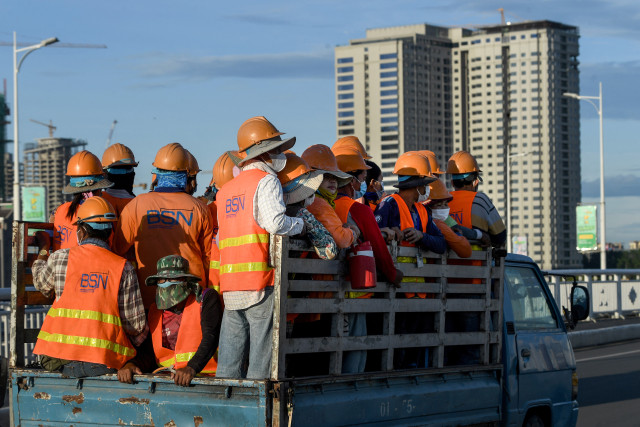Opinion: Understanding Cambodia's Labour Market Beyond Unemployment Stats

- By Kongchheng Poch
- September 10, 2023 12:00 PM
The unemployment rate in Cambodia has become a subject of heated debate in the past weeks. The debate began with the quoted statement of the newly appointed Minister of Labour and Vocational Training, saying that Cambodia's unemployment rate currently stands at 0.5 percent, citing the International Labour Organization (ILO) data.
This figure was reported in the context in which the Cambodian economy, like many economies worldwide, has been affected by declining external demands and a global economic slowdown. Some people have experienced or perceived the impact of fewer economic activities. Hence, the statement has caused dramatic discussions on social and traditional media, questioning the validity of the unemployment rate of 0.5 percent in Cambodia.
The unemployment rate is worthy of debate on its terms or from economic policy perspectives. It is one of the key indicators for measuring the performance of the labour market and the health of an economy. It measures the difference between the labour supplied and demanded in an economy, shedding light on the underutilized labour force.
The ILO's database shows Cambodia's unemployment rate was estimated at 0.5 percent in 2019. Similarly, the Labour Force Survey 2019 reveals that the unemployment rate in Cambodia was 1.2 percent. The employed person is defined as a person aged 15 years and above who does any work for someone for pay, helps with the paid job or business of a family member, or does any business, farming or other activities for pay, even if only for one hour in the last seven days. Given this narrowly defined concept, it is likely to have a very low unemployment rate. It is worth noting that, out of the 7.9 million employed persons, 77.4 percent work in the informal sector, mainly in agricultural activities.
However, there is evidence of job loss or suspension in the garment and footwear industries in the first seven months of 2023. According to the General Department of Customs and Excise data, garment and footwear exports in the first seven months of 2023 were USD 6.4 billion, registering a substantial decline of 20.4 percent compared to the same period last year. The reduced exports indicate contracted production that may result in fewer working hours or even job cuts. Moreover, total fixed-asset investments in the first half of 2023 were USD 1.1 billion, recording a significant drop of 63.2 percent compared to the same period in 2022. The decreased investments underline fewer job creation and economic activities.
Notably, the unemployment rate cannot provide any information about the quality and characteristics of employment. For example, a person may work in a low-paid job, thus, unable to make adequate earnings for a decent living. A well-functioning labour market must create sufficient jobs for working-age people interested in decent working conditions, including adequate earnings and working hours, occupational safety and health, and access to social protection.
To better understand the dynamics and developments of the labour force in the economy, it is indispensable to examine various labour market indicators, including employment status, working hours and earnings. For the case of Cambodia, it is essential to have timely and accessible data on those indicators for major economic sectors that drive growth, such as garment and footwear and tourism. These are the formal or semi-formal sectors where data can be easier to collect than the informal sector. The data on those indicators are vitally important to provide timely and comprehensive evidence to support policy decision-making regarding the labour market and workers, especially during economic downturns. The experience during the COVID-19 pandemic showed that the cash transfer programme implemented by the Cambodian government to support workers whose jobs were lost or suspended was proven beneficial to protect the workers' livelihoods and support aggregate demand in the economy – propping up economic activity.
In conclusion, the unemployment rate helps provide a quick snapshot of the labour force utilization in the country. However, more is needed to assess employment characteristics and the labour market's robustness, especially in real-time developments. It is essential to have data on other indicators such as working hours, earnings, working conditions, and access to social protection for key economic sectors such as garment, footwear, and tourism. The information and evidence of those indicators will be vitally important for policymakers in making informed policy decisions and businesspeople for planning and operations purposes such as hiring and wages.
Kongchheng Poch holds a PhD’s degree in Economics from Lincoln University, New Zealand.















